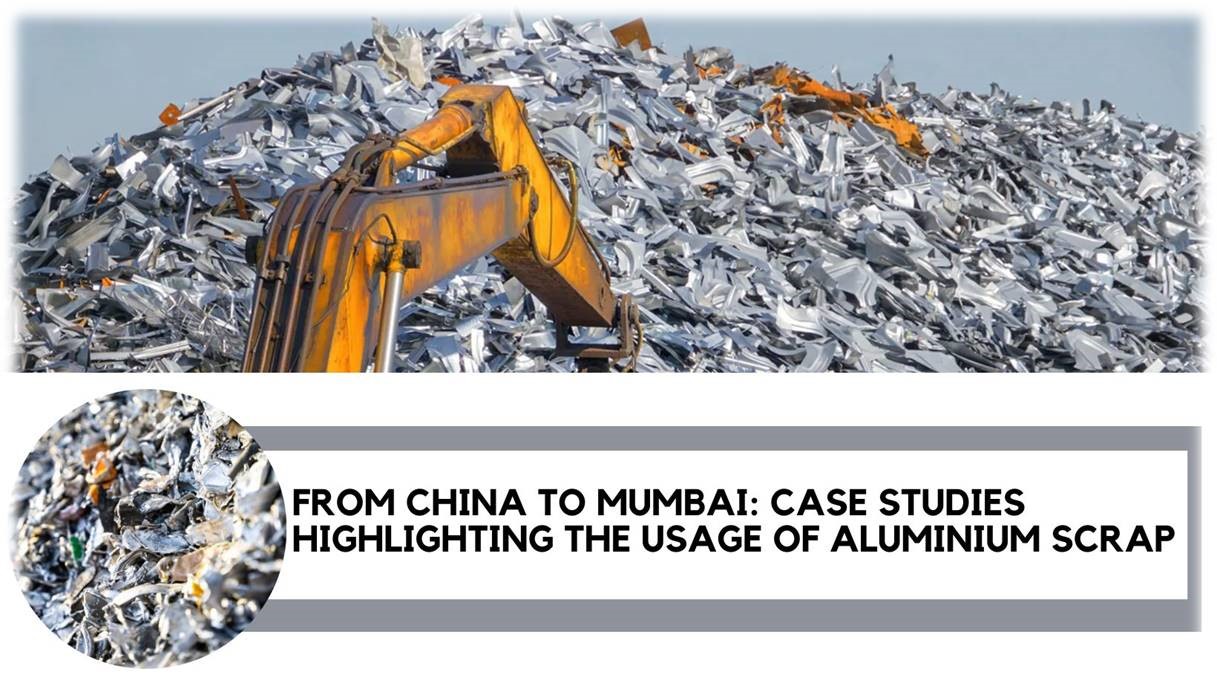

The importance of scrap maybe not be relevant in our daily life, but in the aluminium industry, it is one of the most essential aspects of achieving a sustainable and carbon-free environment. Due to its economic benefits, recycling scrap aluminium is an integral part of the aluminium industry. Recycling aluminium serves current and future generations by preserving energy and other natural resources. It uses up to 95% less energy than primary metal production, minimising equivalent emissions such as greenhouse gases. As per AL Circle's Sustainability report, recycling post-consumer aluminium goods saves more than 90 million tonnes of CO2 and more than 100,000 GWh of electrical energy, similar to the Netherlands' annual power usage. To throw more light on the importance of aluminium scrap recycling, below is a list of case studies highlighting the use of aluminium scrap:

Recycling of aluminium from buildings in China
A recent research on the recycling of aluminium building goods in China indicates that the majority of buildings evaluated had 100% collection rates and that the majority of aluminium window frames are recycled in closed-loop systems. Professor Wei-Qiang Chen and Dr Wanjun Wang of the Chinese Academy of Sciences' Institute of Urban Environment (IUE) assessed nine residential and commercial building demolition projects in the four corners of China: Beijing, Xi'an, Shanghai, and Xiamen. The research followed the collection and recycling paths of aluminium scrap from buildings and gathered information and statistics from many garbage collection sites, aluminium scrap merchants, and aluminium recycling businesses across China.
Mumbai’s Dharavi - an Unorganised Aluminium Recycle Hub
Dharavi, renowned for its capacity to recycle everything Mumbai tosses out, has a strong, albeit disorganised, aluminium recycling economy. Thousands of people are employed by the hundreds of small manufacturers and smelters that collect waste aluminium cans, bottles, and other items, wash them in acid, and then melt them down. Once the moulds are prepared, the molten aluminium is poured inside. Aluminium ingots are cast from molten metal. Aluminium sheets and enclosures are forged from these ingots. Dharavi's unregulated aluminium recycling industry helps the nation by reusing old cans and other aluminium waste rather than mining it for raw materials.
Re-Use and recycle aluminium machining swarf
Aluminium swarf is a waste by-product produced while manufacturing components from aluminium billets, ingots, and castings. Because of its high surface area to volume ratio, this waste product is easily oxidised, and it is often combined with lubricants and cutting fluids used in previous procedures. This may also contain remnants of the cutting instruments, which introduces contaminants into the waste stream and makes recycling more challenging. Only one of the three big automakers produces over 40,000 tonnes of swarf yearly. Disposal of this quantity of waste may be expensive, costing as much as $150 per tonne. This expensive waste is an underutilised resource that may be used better. The UK government reports that 54% of aluminium garbage is recycled as of 2019. Sustainable business groups are urging the British government to recycle as much aluminium as possible. In exchange, the project should save £50 million in materials and energy while reducing CO2 emissions by 2 million tonnes commercially and without considerable capital expenditure.
The ASTRAEA Process
Most commercial smelters produce P1020 with an Al content of 99.7%. This patented technique may provide P0404-rated aluminium with 99.99+% Al. Furthermore, Alcoa says that ASTRAEA can generate such ultra-high purity aluminium from the waste of any grade. Zorba, a low-quality aluminium scrap, has been singled out for use in ASTRAEA's production of P0404 aluminium.
Aluminium is the second most extensively used metal in contemporary society, after steel. Due to its varied features, it has experienced substantial growth in usage in recent decades in transportation, construction, packaging, and electrical engineering. Over the years, global aluminium manufacturers have tried extensively to reduce their ecological carbon footprint. Aluminium is 100% recyclable, which helps to save 95% of the energy used in its production from virgin raw materials. Because of the adoption of a circular economy, the aluminium sector is steadily aiming towards zero waste, making the aluminium life cycle resource-efficient.
Responses








